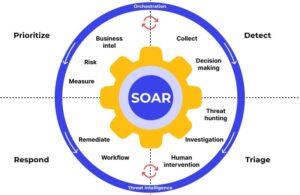Navigating the Subscription Economy: Engaging Customers with Long-Term Value
The subscription economy has radically transformed how businesses and consumers interact. Subscription models have shifted from niche platforms to mainstream practices, providing companies with a steady revenue stream while delivering consumers convenience and access to a variety of products and services. In this evolving landscape, engaging customers with long-term value becomes a cornerstone for success. This article explores how businesses can navigate the subscription economy by focusing on effective customer engagement strategies, ultimately fostering loyalty and trust while creating sustainable growth.
Understanding the Subscription Economy: A Comprehensive Overview
The subscription economy is defined by a business model that allows customers to access products or services on a recurring basis, typically monthly or annually, in exchange for a fee. This model enables companies to shift from transactional sales to long-term revenue streams, giving them greater predictability in revenue forecasting. With the rise of digital platforms, subscriptions have expanded well beyond traditional media outlets, nestling their way into various industries, including software, food delivery, fitness, and e-commerce.
One of the key characteristics of the subscription economy is the emphasis on customer retention over acquisition. Businesses now prioritize cultivating long-term relationships with customers, understanding that each retained subscriber represents not only continued revenue but the potential for upselling and cross-selling opportunities. This strategic focus has led to the emergence of several successful companies, such as Netflix, Spotify, and Adobe, which rely heavily on subscription models to deliver value to their users.
Managing customer engagement in this economy demands a nuanced approach, as expectations around service and product quality have significantly heightened. Consumers are now seeking seamless experiences and personalization, which puts pressure on businesses to innovate continuously. Companies that understand how to navigate these dynamics—not only by attracting new subscribers but also by retaining existing ones—can achieve a sustainable competitive advantage in the marketplace.
Key Benefits of Long-Term Customer Engagement Strategies
Long-term customer engagement strategies are vital for subscription-based businesses, as they provide several benefits that contribute to ongoing success. For one, these strategies incentivize customers to remain subscribed, decreasing churn rates and increasing lifetime value (LTV). High LTV becomes particularly significant for subscription services, as the cumulative revenue from retained subscribers can far outweigh one-time purchases. By investing in engagement, companies not only stabilize their revenue streams but also create a loyal customer base that is less likely to switch to competitors.
Moreover, establishing long-term engagement opens channels for meaningful dialogue between businesses and consumers. When companies actively engage with their customers, they can solicit feedback, understand preferences, and promptly address concerns. Additionally, this dialogue enhances the customer experience, fostering a sense of community and belonging that encourages continued patronage. A vibrant and engaged user community also helps brands harness word-of-mouth marketing, further enhancing their reputation and reach.
Lastly, effective long-term engagement strategies create opportunities for upselling and cross-selling. As companies deepen their understanding of customer behaviors and preferences, they can offer tailored products and services that resonate more closely with individual needs. This not only boosts revenue but also reinforces the customer’s perception of the brand as a value provider that prioritizes their satisfaction.
Building Trust and Loyalty in Subscription Models
Trust and loyalty are cornerstones of successful subscription models. For consumers to commit to a subscription, they must feel assured that they are receiving value that aligns with their needs and expectations. Brands can build this trust by maintaining transparency in their pricing, services, and any changes that may impact subscribers. Open communication about enrollment, cancellation policies, and any shifts in service offerings simplifies the customer journey and positions the brand as reputable and customer-centric.
Another way to foster loyalty is through consistent quality and reliability. Customers expect that the products or services they subscribe to will meet their standards without failure. Companies can enhance trust by conducting regular quality assessments and being responsive to feedback. Metrics like Net Promoter Score (NPS) and customer satisfaction surveys can provide insights into customer perceptions, enabling businesses to make necessary adjustments to uphold trust.
Additionally, creating a sense of belonging can significantly enhance loyalty. Companies can utilize personalized marketing strategies, community forums, and exclusive content to engage subscribers on a deeper level. When customers feel like they belong to a community or a brand that understands and caters to their unique needs, their likelihood of remaining subscribed increases dramatically, ultimately benefiting the business in terms of retention and customer lifetime value.
Creating Value through Personalization and Customer Insights
In the current subscription economy, personalization is essential for creating lasting value for customers. Subscribers appreciate tailored experiences that reflect their individual preferences and behaviors. This can be achieved through advanced data analytics and customer insights, which allow companies to segment their audience effectively and develop customized offerings. Through analyzing purchasing habits, engagement patterns, and feedback, brands can craft unique experiences that engage customers on a personal level.
Implementing personalization strategies not only enhances customer satisfaction but also drives loyalty. For instance, streaming platforms like Netflix utilize complex algorithms to suggest content based on user viewing histories. Such tailored recommendations keep users invested in the service, as they continually discover new content that resonates with their interests. This approach not only increases retention rates but also encourages users to spend more time engaging with the service, amplifying overall satisfaction.
Furthermore, personalization can also extend to communication styles. Brands can utilize customer data to personalize outreach, tailoring emails, notifications, and promotions for specific user segments. This level of engagement not only shows customers that their needs are being prioritized, but it can also significantly improve response rates to marketing campaigns, leading to increased conversions and higher overall customer satisfaction.
Measuring Success: Metrics for Subscription-Based Businesses
Measuring success in the subscription economy requires a different set of metrics compared to traditional sales models. Key performance indicators (KPIs) such as Monthly Recurring Revenue (MRR), Customer Acquisition Cost (CAC), and Lifetime Value (LTV) are vital for tracking the health of the subscription business. MRR gives insights into the ongoing revenue potential, while CAC helps businesses understand their efficiency in acquiring new subscribers. LTV quantifies the overall value a customer brings throughout their lifetime, guiding strategic investment in both acquisition and engagement efforts.
Churn rate, another essential metric, provides critical insight into how many customers are leaving the service within a given period. A high churn rate can indicate issues with customer satisfaction or product quality, prompting businesses to examine their engagement strategies. Reducing churn is pivotal, as retaining customers is often more cost-effective than acquiring new ones. Continuous analysis of churn allows organizations to uncover underlying problems and implement targeted solutions.
Additionally, measuring customer engagement through quantitative and qualitative metrics, like NPS or customer feedback loops, can aid in understanding the health of the subscriber relationship. By continuously refining their strategies based on these measurements, businesses can optimize their offerings and engagement efforts, ultimately fortifying customer loyalty and enhancing long-term profitability.
Best Practices for Customer Retention in Subscriptions
Customer retention in subscription businesses can be maximized through a series of best practices that ensure subscribers feel valued and engaged. First, businesses should prioritize onboarding experiences. Providing a structured, user-friendly onboarding process can help new subscribers understand how to derive maximum value from the service, which in turn reduces early churn. Educational resources, tutorials, and proactive customer support can facilitate smoother transitions for new users.
Next, proactive communication can significantly improve retention rates. Regularly checking in with subscribers through personalized emails, newsletters, or updates can foster a sense of connection and loyalty. Additionally, providing users with insights on how they can utilize the service more effectively or introducing them to new features can keep them engaged and encourage longer subscriptions. Businesses should also solicit feedback regularly, demonstrating that they genuinely care about their customers’ experiences.
Lastly, incentivizing long-term subscriptions can mitigate churn. Offering discounts for multi-month commitments or loyalty rewards for long-term customers can encourage subscribers to stay for extended periods. Such incentives not only reinforce the idea of receiving value over time, but they also create a tangible benefit for subscribers who might otherwise consider canceling or switching to a competing brand. Companies must continually analyze the effectiveness of these strategies to ensure that they remain relevant and appealing to customers.
The Role of Technology in Enhancing Customer Experience
Technology plays a crucial role in navigating the subscription economy by enhancing the customer experience across various touchpoints. Advanced analytics and Artificial Intelligence (AI) enable businesses to extract invaluable insights from data concerning customer behavior, preferences, and engagement patterns. By leveraging these insights, organizations can personalize services and marketing communications, tailoring offerings to specific customer segments more precisely than ever before.
Furthermore, automation technologies contribute significantly to improving operational efficiency and the customer experience. For instance, automated billing systems streamline the payment process and reduce friction during renewals. Chatbots and AI-driven customer service platforms can provide immediate support for inquiries or issues, ensuring users feel heard and valued. These innovations enhance user experiences and minimize disruptions that could lead potential customers to reconsider their subscriptions.
Lastly, integrating customer feedback loops within technology platforms allows for continuous improvement in service delivery. Subscription businesses can use data collected from surveys and user interactions to adjust offerings in real time based on subscriber needs. By remaining nimble and responsive to customer feedback, organizations can ensure customer satisfaction and foster loyalty, adapting their services to align with ever-changing market demands.
In conclusion, navigating the subscription economy requires a strategic focus on engaging customers with long-term value at its core. By fostering trust and loyalty, creating personalized experiences through data-driven insights, and leveraging technology for enhanced customer experience, businesses can maintain a competitive edge and drive sustainable growth. Companies that prioritize these elements are better positioned to thrive in the dynamic landscape of the subscription economy, ensuring they meet the demands of their customers while maximizing their own operational success. For additional insight into subscription models and customer engagement strategies, refer to resources such as Subscription School (https://subscriptionschool.com).










1 comment